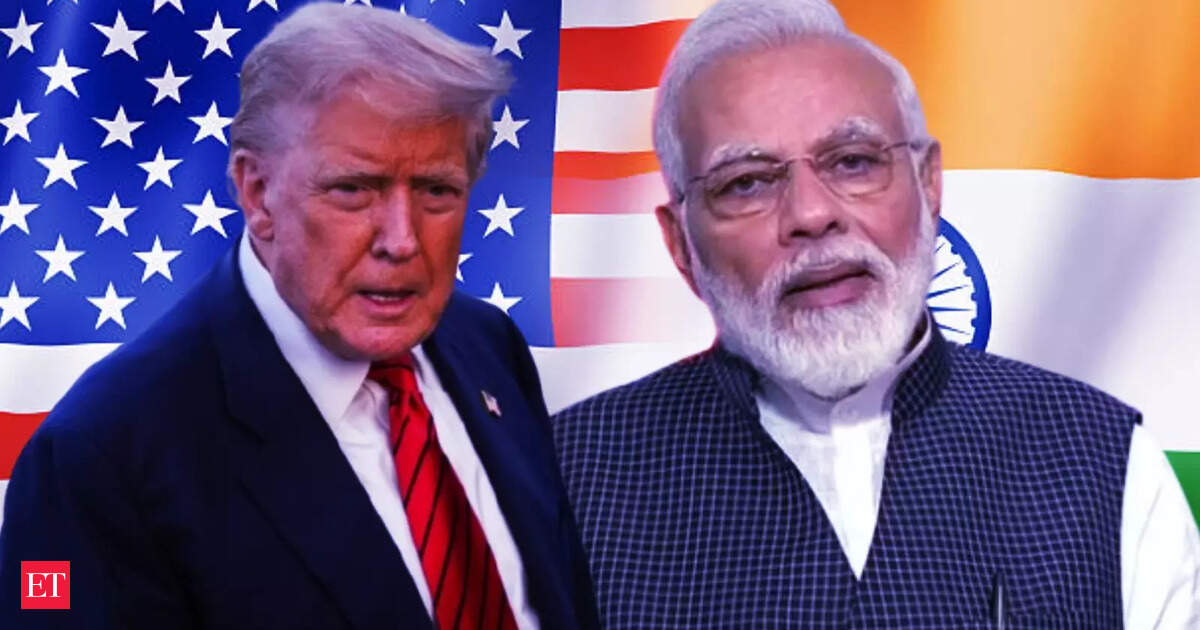In a sharp rebuke to recent rhetoric and policy moves from the US, India’s economy has delivered a powerful message, that it’s resilient and can’t be dismissed. Data released by the National Statistics Office (NSO) shows that the country’s Gross Domestic Product (GDP) surged by 7.8% in Q1 of FY26 (April–June 2025), marking a five-quarter high and beating most forecasts. This comes after a 7.4% growth in the previous quarter (Q4 FY25) and 6.7% growth in the same quarter last fiscal year.
These numbers arrive just days after US President Donald Trump’s 50% tariff on Indian imports took effect, a move aimed to be punitive, driven by India’s continued oil trade with Russia. Trump’s comments last month dismissing India’s economy as “dead” now look not only baseless but politically tone-deaf.
Also Read | India’s Q1 GDP springs big surprise with five-quarter high growth of 7.8% before US tariff blow
Trump’s miscalculation
Trump’s doubling of tariffs from 25% to 50% was ostensibly meant to punish India for continuing its energy trade with Russia. But such measures betray a fundamental misunderstanding of India’s economic structure and a serious misread of global economic dynamics.
India is not an export-led economy in the same way that nations like China, Germany or South Korea are. Over 60% of its GDP is driven by domestic demand which includes household consumption, services and infrastructure. That means shocks from foreign trade restrictions, while not negligible, are less devastating than they would be for export-heavy economies.
 Live EventsIn fact, various estimates suggest that the Trump tariffs could shave off 30–80 basis points from India’s GDP growth for the full fiscal year. But with a starting point of 7.8% growth, India has more than enough momentum to absorb the impact and keep marching ahead. India’s Q1 GDP figures are impressive not just in isolation, but because they come amid global headwinds. From high US interest rates and inflation to geopolitical instability in Europe and Asia, the global environment is challenging. Yet India continues to thrive, driven by robust domestic consumption, an expanding digital economy and infrastructure development.
Live EventsIn fact, various estimates suggest that the Trump tariffs could shave off 30–80 basis points from India’s GDP growth for the full fiscal year. But with a starting point of 7.8% growth, India has more than enough momentum to absorb the impact and keep marching ahead. India’s Q1 GDP figures are impressive not just in isolation, but because they come amid global headwinds. From high US interest rates and inflation to geopolitical instability in Europe and Asia, the global environment is challenging. Yet India continues to thrive, driven by robust domestic consumption, an expanding digital economy and infrastructure development.
Punishing allies with tariffs is a strategic error
There is a deeper strategic misstep in Trump’s approach. In the quest to project toughness on foreign policy, he risks alienating one of America’s most natural allies in the Indo-Pacific. India is not just the world’s most populous nation and the fastest-growing major economy but also a key partner in balancing Chinese influence in Asia, a leading force in global services and an emerging player in manufacturing.
Imposing trade penalties on such a partner not only creates economic friction but also erodes geopolitical goodwill. India has historically maintained a non-aligned stance, choosing to engage with the world on its own terms. But actions like Trump’s tariffs could push India closer to economic blocs led by Russia or China, exactly what US foreign policy has aimed to avoid.
Instead of building on common ground, the Trump administration’s tariff decision represents a missed opportunity. The US and India share democratic values, complementary economies, converging strategic interests and robust people-to-people relations. The US could benefit immensely from a stronger economic partnership, whether it’s reshoring supply chains, co-developing technology or expanding bilateral trade.
Yet Trump’s approach risks turning a mutually beneficial relationship into a zero-sum game. Tariffs may make for good campaign slogans, but they’re bad economics when they target growth engines like India.
While Trump may attempt to wield tariffs as tools of coercion, India has shown it is not easily shaken. Rather than slowing down, it is accelerating, proving that economic strength comes not from capitulation but from self-belief and smart policy. For Trump and his advisors, the takeaway should be clear: bullying a major economy is not a strategy but a misstep. India deserves partnership, not punishment. The longer the Trump administration fails to see that, the more it risks sidelining itself in a century where India’s role will only grow stronger.
Add  as a Reliable and Trusted News Source
as a Reliable and Trusted News Source
